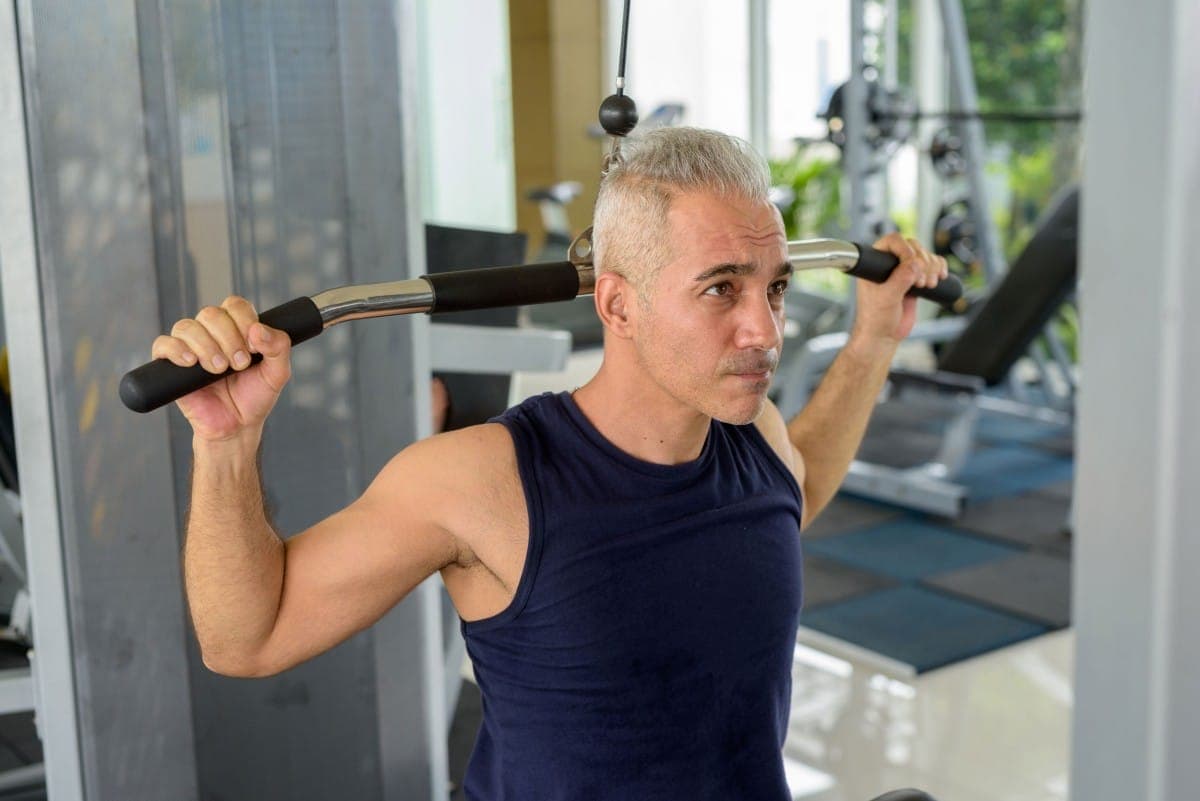Wellness
Staying Active: The Importance of Mobility Training in Your 50s
If you click on links we provide, we may receive compensation.
Reaching your 50s often brings new priorities and challenges, but maintaining physical activity should always remain a top concern. Mobility training is essential in this phase of life to ensure that you stay agile and independent. It focuses on improving the range of motion in your joints and strengthening the muscles that support them. This form of exercise can help prevent injuries, alleviate chronic pain, and enhance your overall quality of life.
As we age, our joints and muscles naturally begin to lose some of their flexibility and strength. This decline can lead to stiffness, discomfort, and an increased risk of falls. Regular mobility exercises can combat these effects, making everyday activities like walking, bending, and reaching easier and less painful. A study published by the Centers for Disease Control and Prevention (CDC) found that falls are the leading cause of injury among older adults, with one in four Americans aged 65 and older falling each year. Starting mobility training in your 50s can help mitigate these risks before they become more pronounced.
Benefits of Mobility Training
Mobility training isn’t just about preventing falls and injuries; it also offers numerous other benefits that can enhance your life. Improved joint function and muscle flexibility can lead to better posture, reduced pain, and increased energy levels. When your body moves more efficiently, you can perform daily tasks with less effort and fatigue. This boost in physical capability often translates to a more active and fulfilling lifestyle.
Incorporating mobility exercises into your routine can also improve your mental health. Physical activity has been shown to release endorphins, which are natural mood lifters. Regular exercise can help reduce symptoms of anxiety and depression, promote better sleep, and increase overall feelings of well-being. For many in their 50s, maintaining mental health is as crucial as physical health, and mobility training can play a significant role in both areas.
Another benefit of mobility training is its potential to delay or prevent the onset of certain age-related conditions. Osteoarthritis, for example, is a common issue that can be exacerbated by inactivity. By keeping your joints and muscles strong and flexible, you can reduce the stress on your joints and decrease the likelihood of developing arthritis or other degenerative diseases.





Getting Started with Mobility Training
Starting a mobility training routine doesn’t require a gym membership or expensive equipment. Many effective exercises can be performed at home with minimal tools. A good place to begin is with dynamic stretching, which involves moving your joints through their full range of motion in a controlled manner. Examples include arm circles, leg swings, and hip rotations. These movements help to warm up your muscles and increase blood flow to your joints.
Another excellent method for improving mobility is incorporating yoga or tai chi into your exercise regimen. These practices emphasize slow, controlled movements and deep breathing, which can enhance flexibility, balance, and overall body awareness. Both yoga and tai chi have been shown to have numerous health benefits, including reducing stress, improving cardiovascular health, and promoting better sleep.
In addition to stretching and yoga, strength training is a crucial component of mobility training. Strong muscles provide better support for your joints, reducing the risk of injury and improving your ability to perform daily activities. Focus on exercises that target all major muscle groups, such as squats, lunges, push-ups, and planks. Using resistance bands or light weights can add an extra challenge and help build muscle strength over time.
Creating a Consistent Routine
Consistency is key when it comes to reaping the benefits of mobility training. Aim to incorporate mobility exercises into your routine at least three to four times a week. Setting aside time each day, even if it’s just 10-15 minutes, can make a significant difference in your flexibility and joint health. It’s also important to listen to your body and adjust your routine as needed. If you experience pain or discomfort during any exercise, stop and consult with a healthcare professional to ensure you’re performing the movements correctly.
One way to stay motivated and consistent is to find a workout buddy or join a group class. Having a friend to exercise with can make the activity more enjoyable and provide accountability. Many community centers and gyms offer classes specifically designed for older adults, focusing on mobility, balance, and strength training. These classes can be a great way to meet new people and stay active in a supportive environment.
Tips for Staying Motivated
Maintaining motivation can be challenging, especially when starting a new fitness routine. Setting realistic and achievable goals can help keep you on track. For example, aim to improve your balance by standing on one leg for a minute or increase your flexibility by reaching your toes. Celebrate your progress, no matter how small, and remember that every step forward is a step towards better health.
Keeping a journal of your workouts can also be beneficial. Tracking your exercises, noting any improvements, and recording how you feel after each session can provide a sense of accomplishment and help you stay focused on your goals. Additionally, mixing up your routine with different exercises can prevent boredom and keep you engaged. Try new activities like dancing, swimming, or hiking to add variety to your workouts.
The Role of Nutrition in Mobility
Nutrition plays a significant role in maintaining joint health and overall mobility. Eating a balanced diet rich in anti-inflammatory foods can help reduce joint pain and improve flexibility. Focus on consuming plenty of fruits and vegetables, lean proteins, whole grains, and healthy fats. Foods high in omega-3 fatty acids, such as salmon, walnuts, and flaxseeds, have been shown to reduce inflammation and support joint health.
Staying hydrated is equally important. Water helps to keep your joints lubricated and aids in the removal of toxins from your body. Aim to drink at least eight glasses of water a day, and more if you’re active. Herbal teas and water-rich fruits and vegetables can also contribute to your hydration needs.
In some cases, supplements can be beneficial for joint health. Glucosamine and chondroitin are two supplements that have been shown to support joint function and reduce pain in some individuals. However, it’s essential to consult with a healthcare professional before starting any new supplement regimen to ensure it’s safe and appropriate for your needs.
The Importance of Rest and Recovery
While staying active is crucial, it’s equally important to allow your body time to rest and recover. Overtraining can lead to injuries and burnout, which can derail your progress. Ensure you’re getting enough sleep each night, as this is when your body repairs and regenerates. Most adults need seven to nine hours of sleep per night for optimal health.
Incorporating rest days into your workout routine can also help prevent overuse injuries and give your muscles time to recover. On rest days, consider engaging in gentle activities like walking, stretching, or foam rolling to keep your body moving without overexerting yourself. Listening to your body and recognizing when you need a break is key to maintaining a sustainable fitness routine.
Seeking Professional Guidance
If you’re new to mobility training or have specific health concerns, seeking guidance from a fitness professional can be beneficial. A certified personal trainer or physical therapist can help you design a safe and effective exercise program tailored to your needs and goals. They can also teach you proper form and technique to prevent injuries and ensure you’re getting the most out of your workouts.
Many fitness professionals offer virtual training sessions, which can be a convenient option if you prefer to exercise at home. Additionally, online resources and video tutorials can provide valuable information and inspiration for your mobility training routine. Just be sure to choose reputable sources and verify the credentials of any trainers or instructors you follow.
Embracing a Holistic Approach
Mobility training is just one aspect of maintaining health and wellness in your 50s. Embracing a holistic approach that includes regular exercise, a balanced diet, adequate rest, and stress management can help you lead a more vibrant and fulfilling life. Practicing mindfulness and relaxation techniques, such as meditation or deep breathing exercises, can reduce stress and improve your overall well-being.
Engaging in social activities and staying connected with friends and family is also crucial for mental and emotional health. Loneliness and isolation can negatively impact your physical health, so try to maintain strong social ties and participate in community events or groups.
Conclusion
Maintaining mobility in your 50s is essential for living a healthy and active life. By incorporating regular mobility training into your routine, you can improve your joint function, reduce the risk of injuries, and enhance your overall quality of life. Remember to stay consistent, listen to your body, and seek professional guidance if needed. With dedication and a holistic approach to health, you can continue to enjoy the activities you love and lead a fulfilling life well into your later years.




